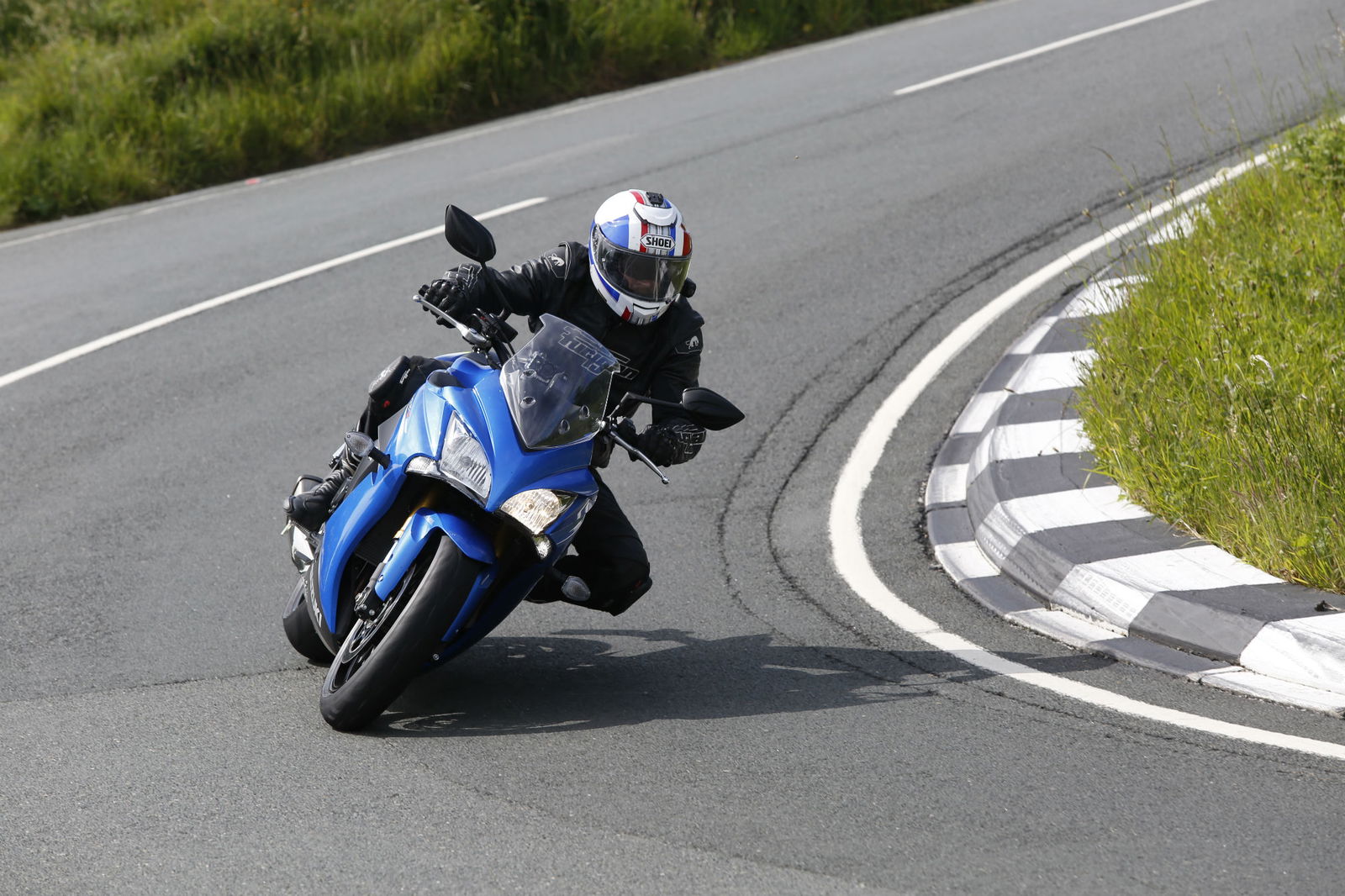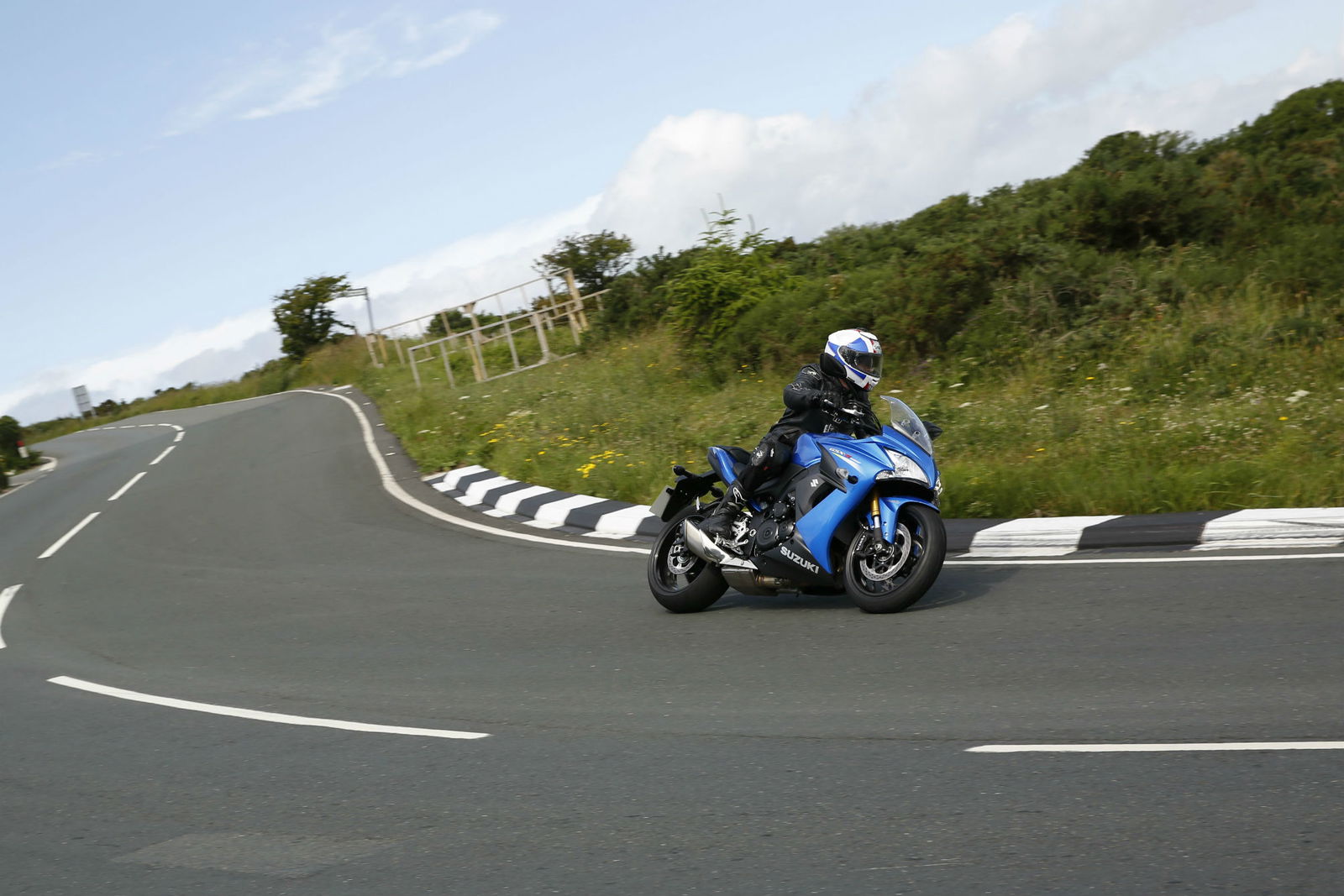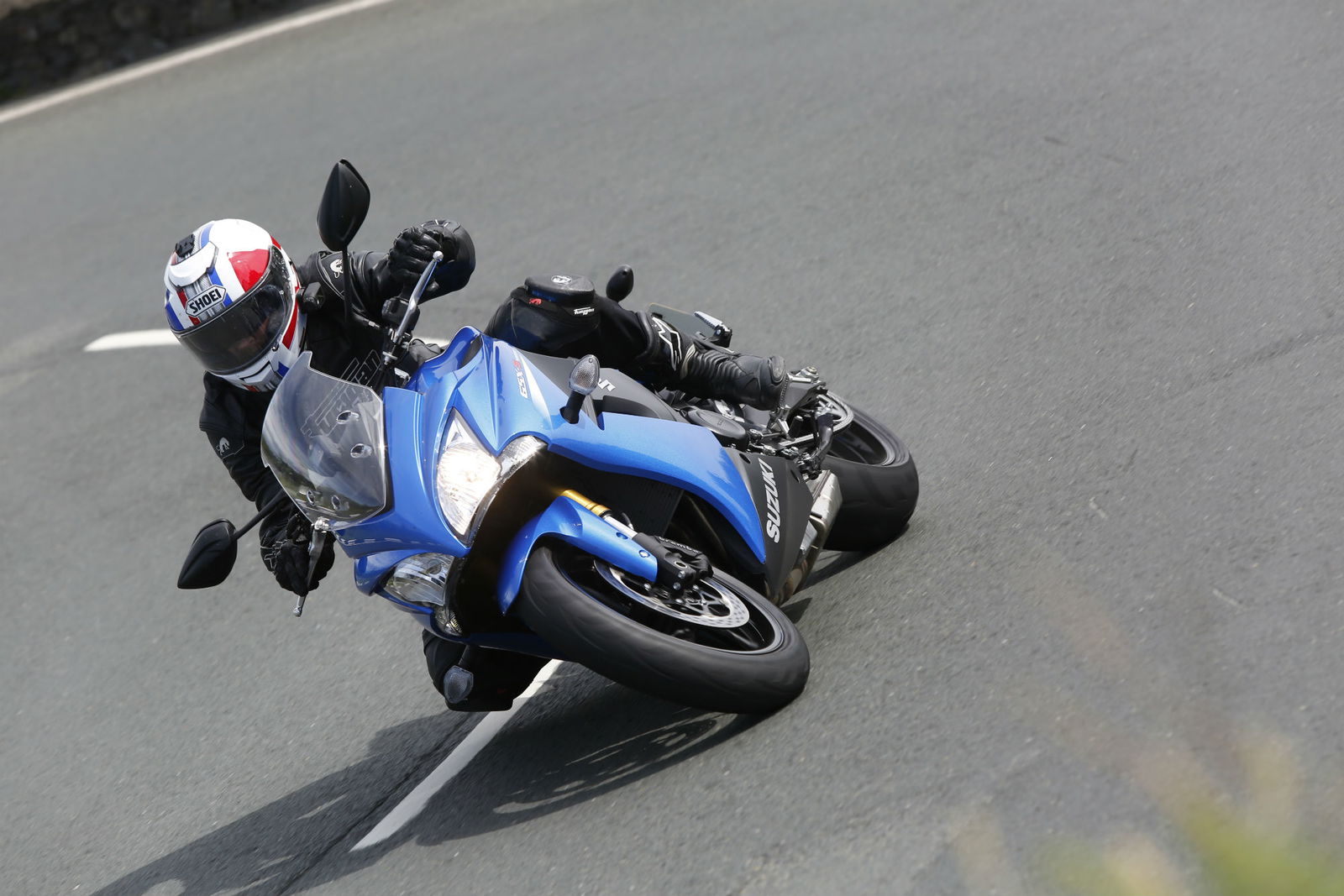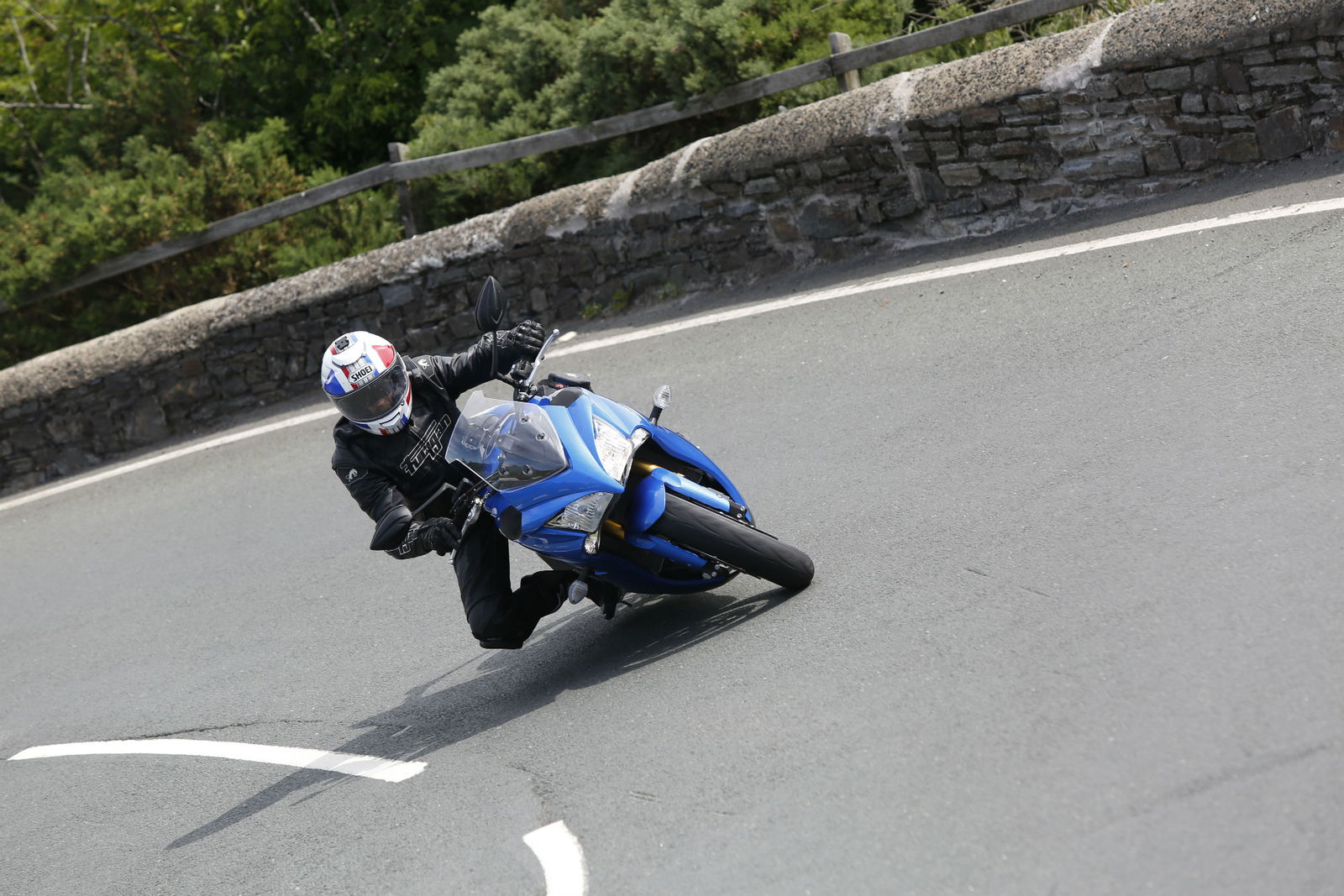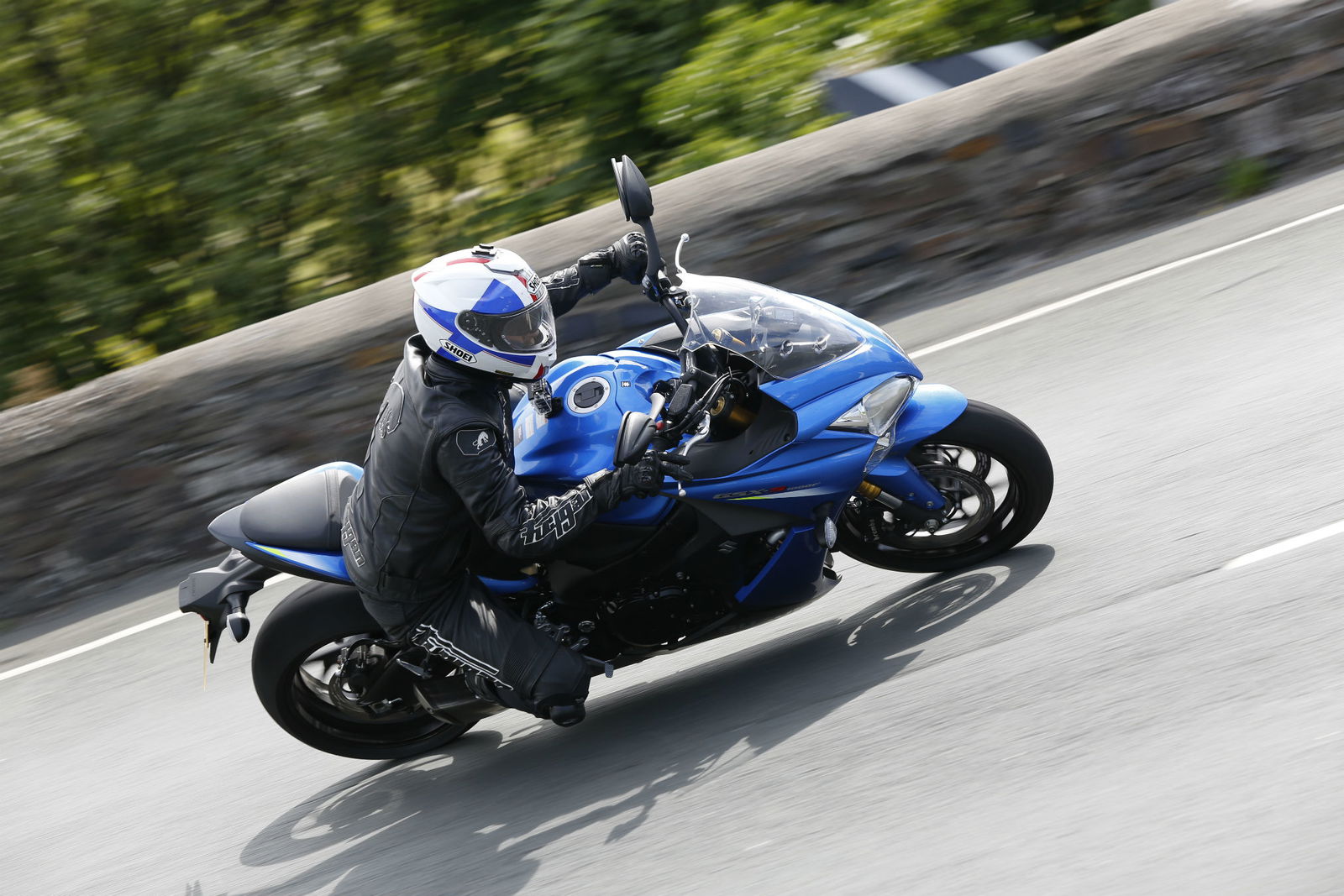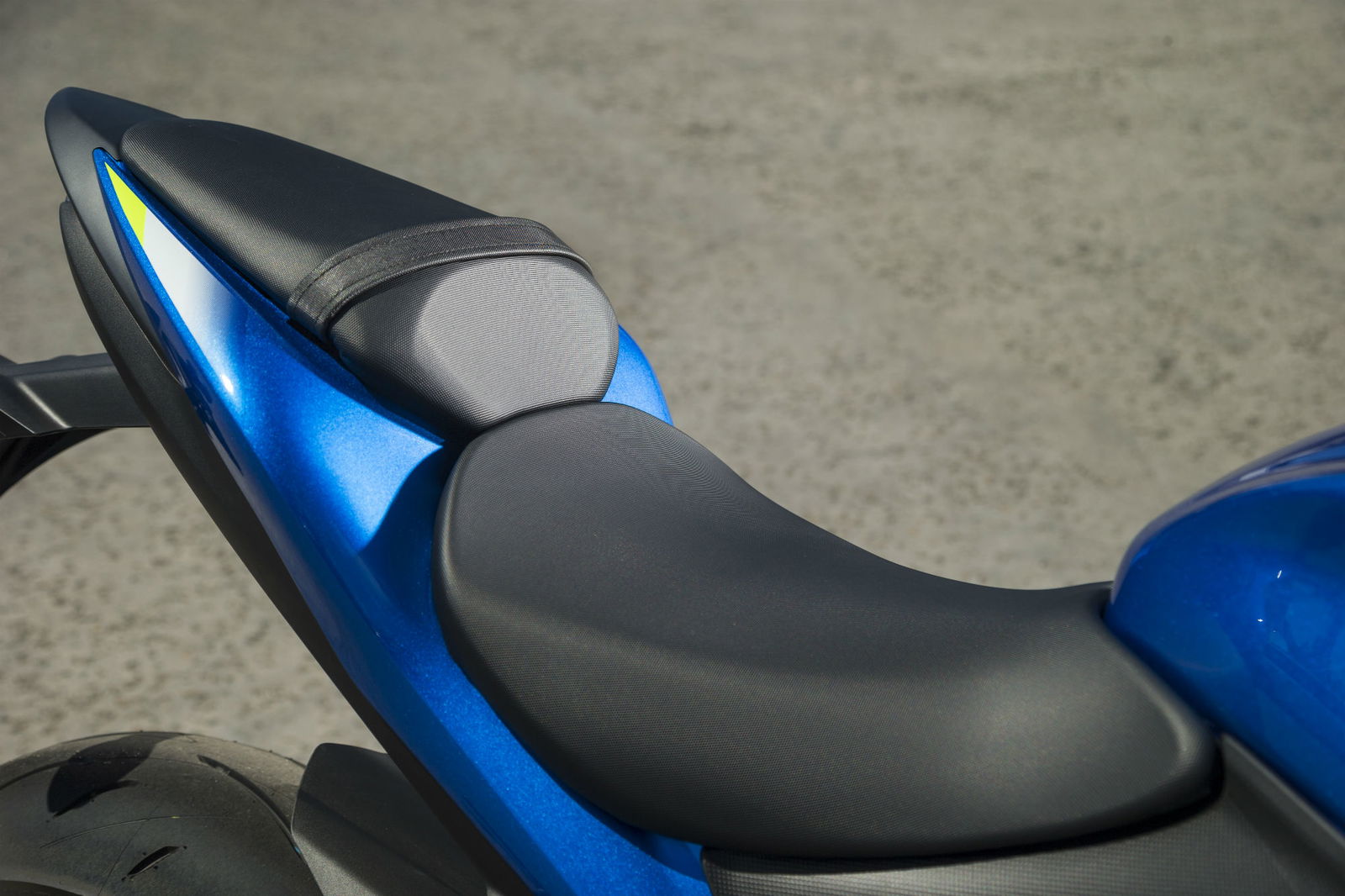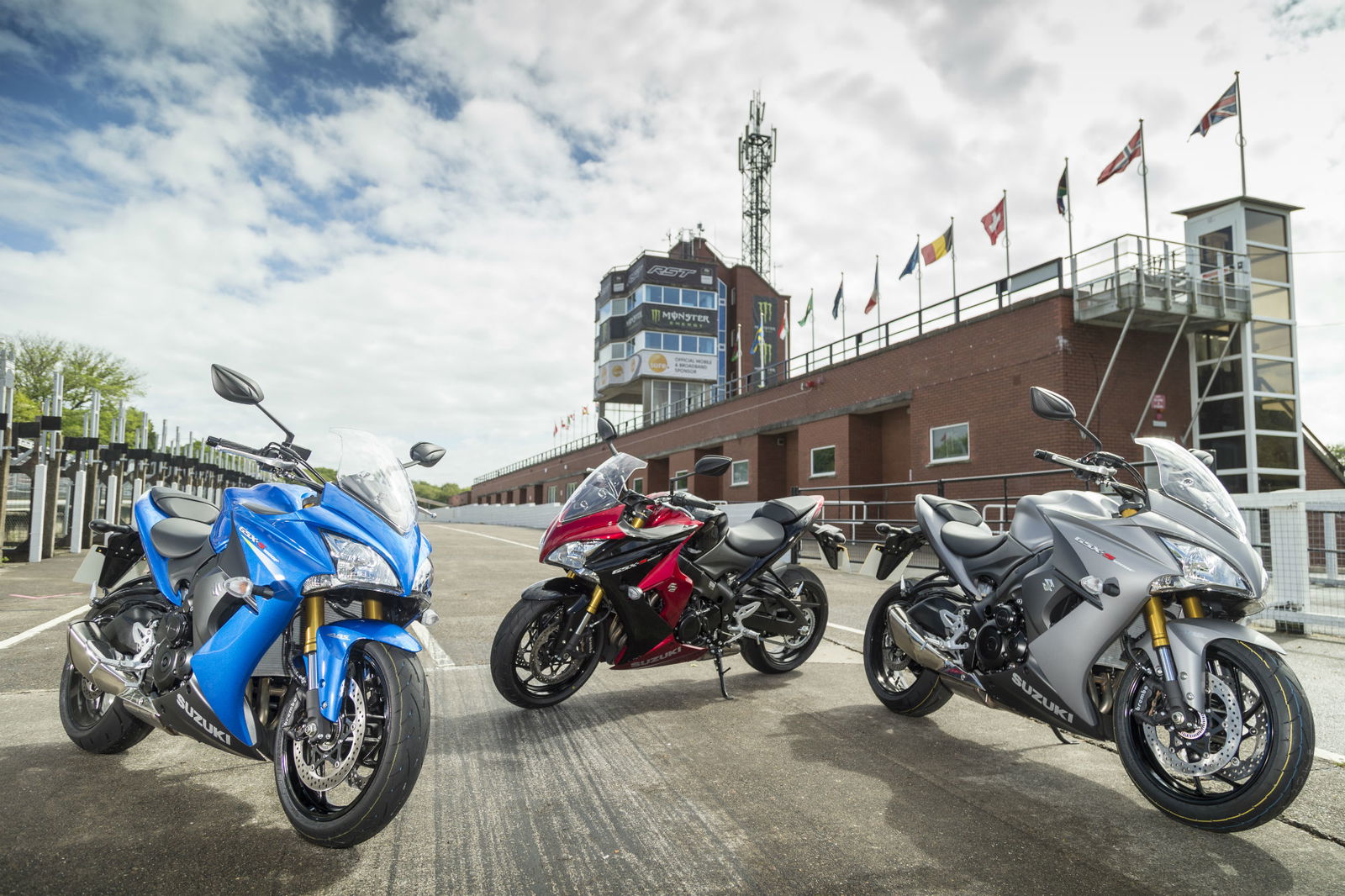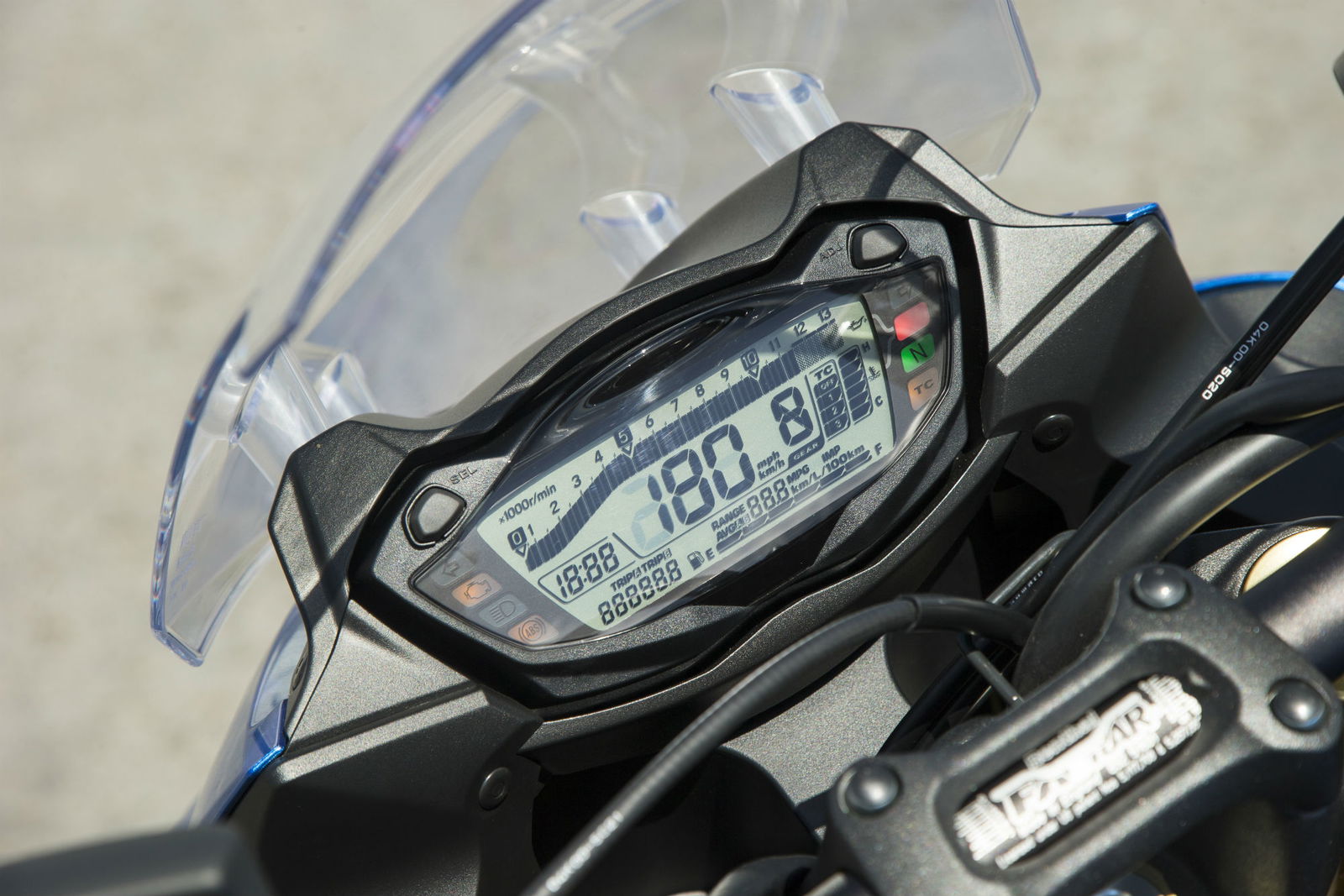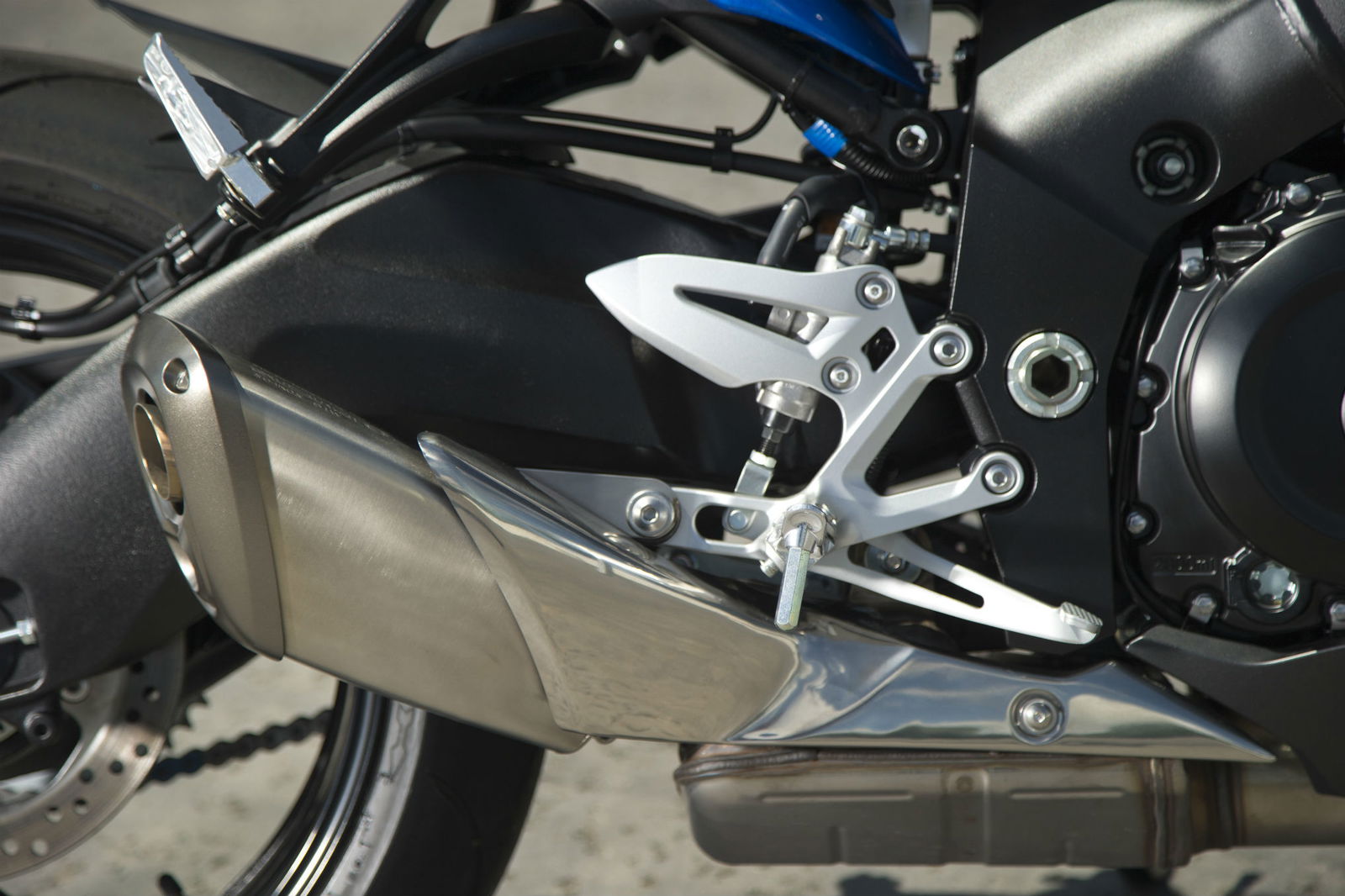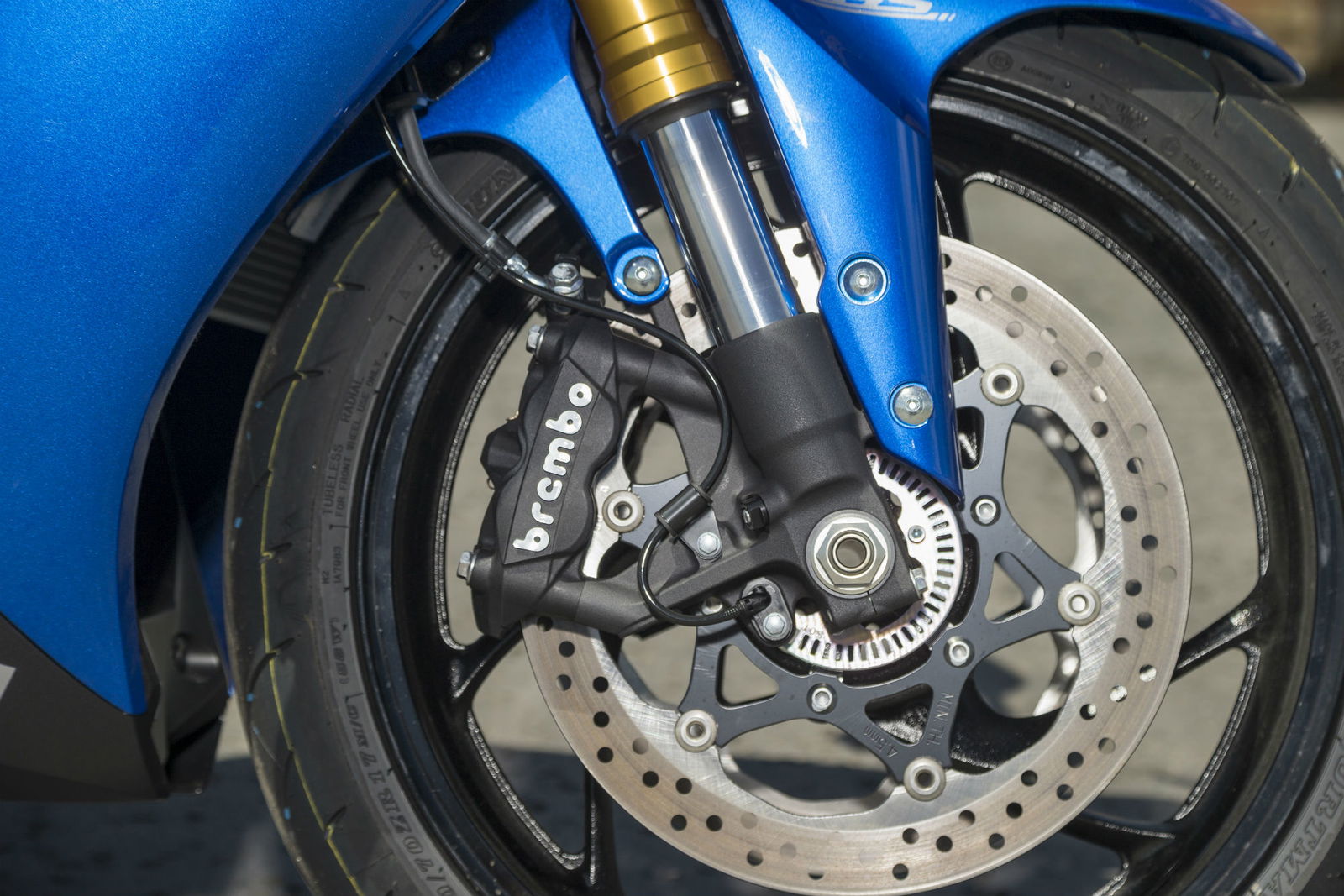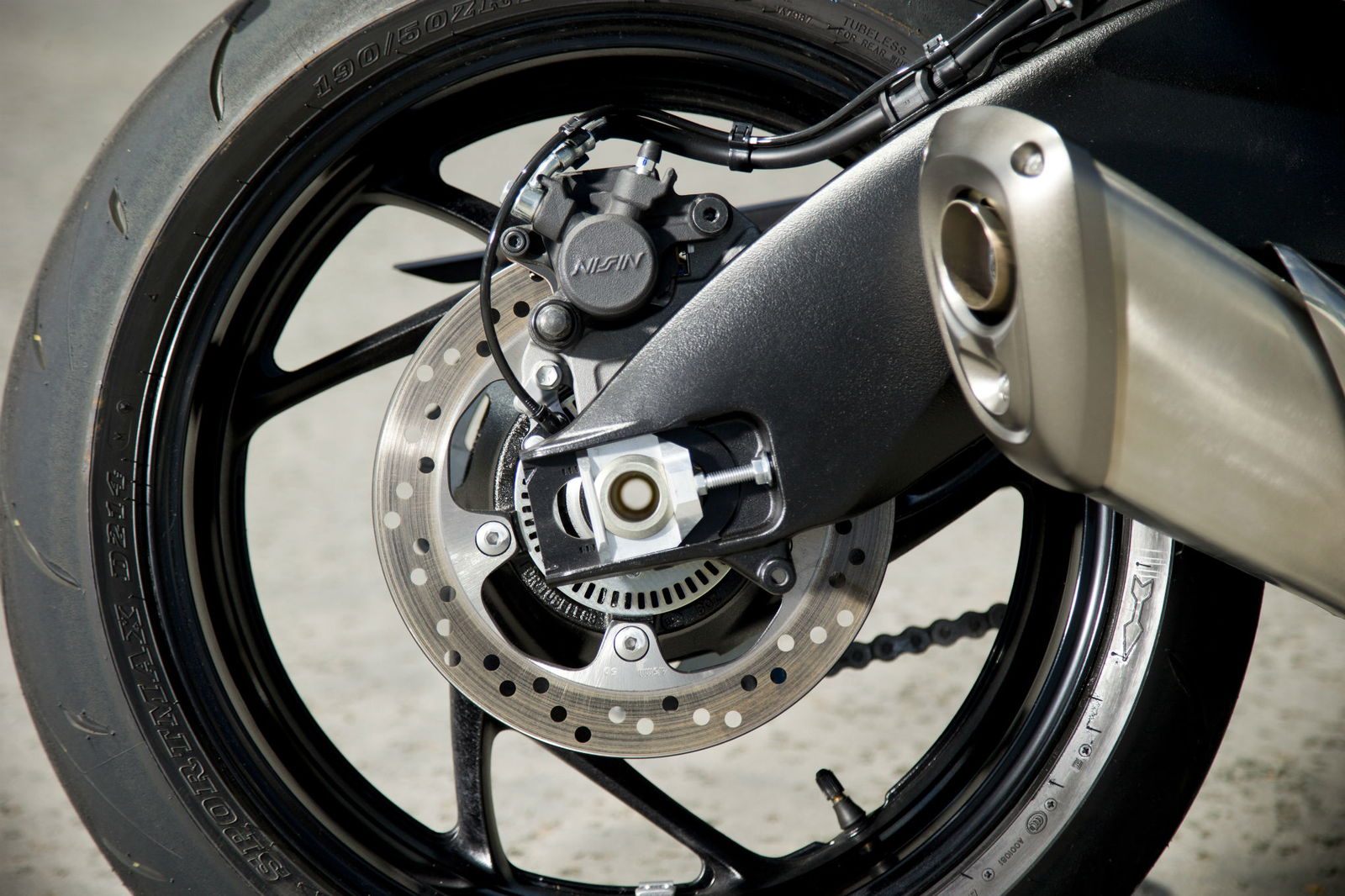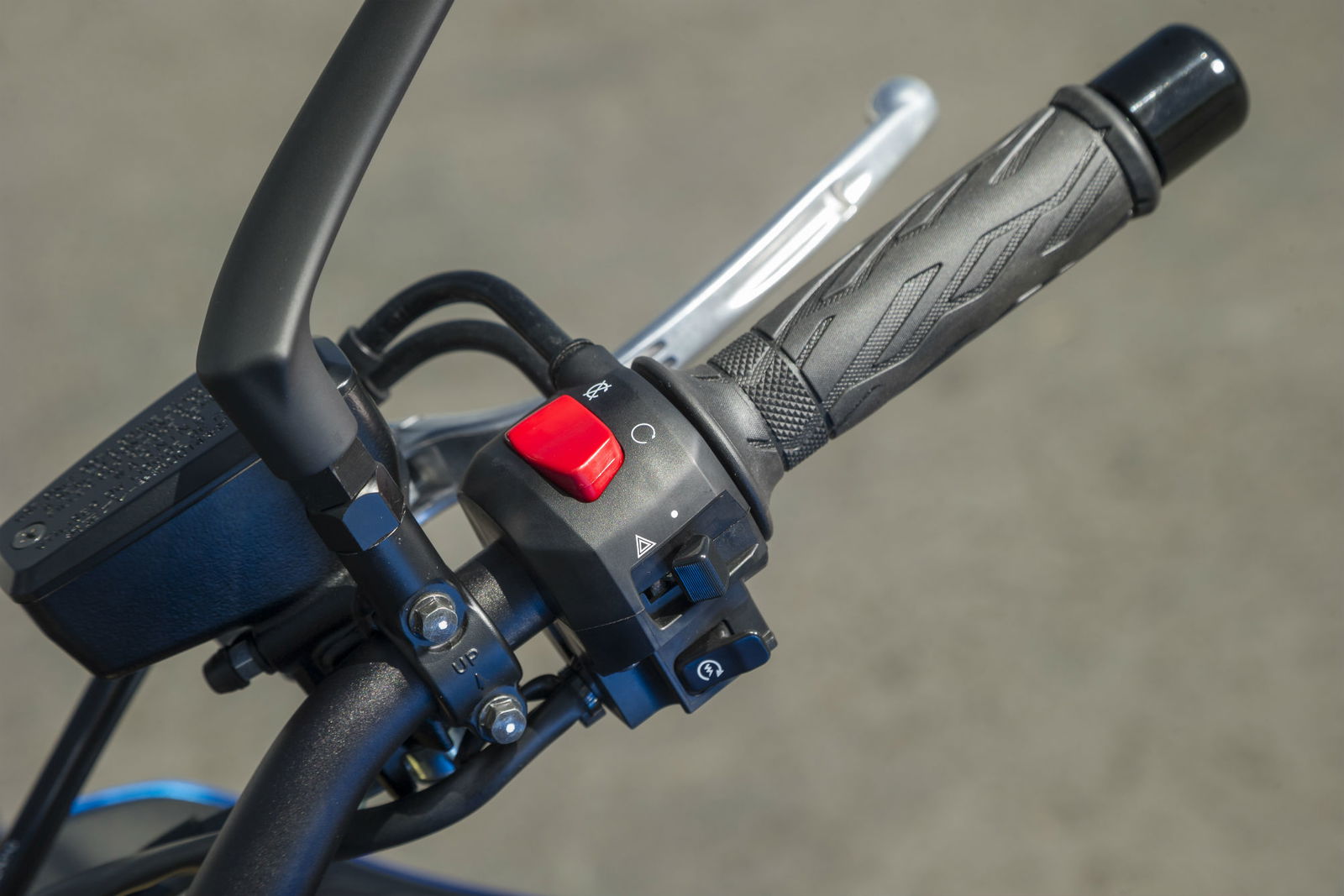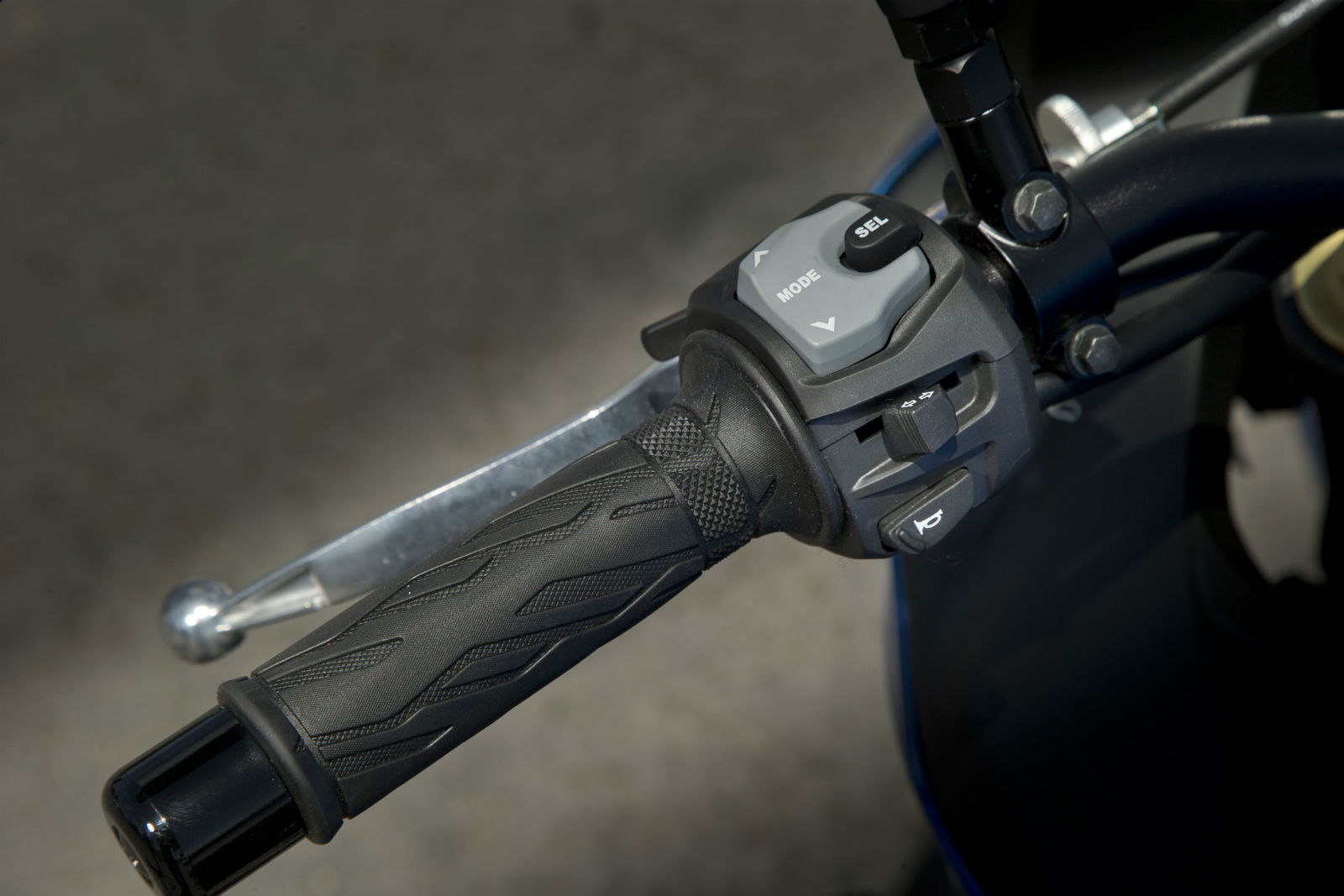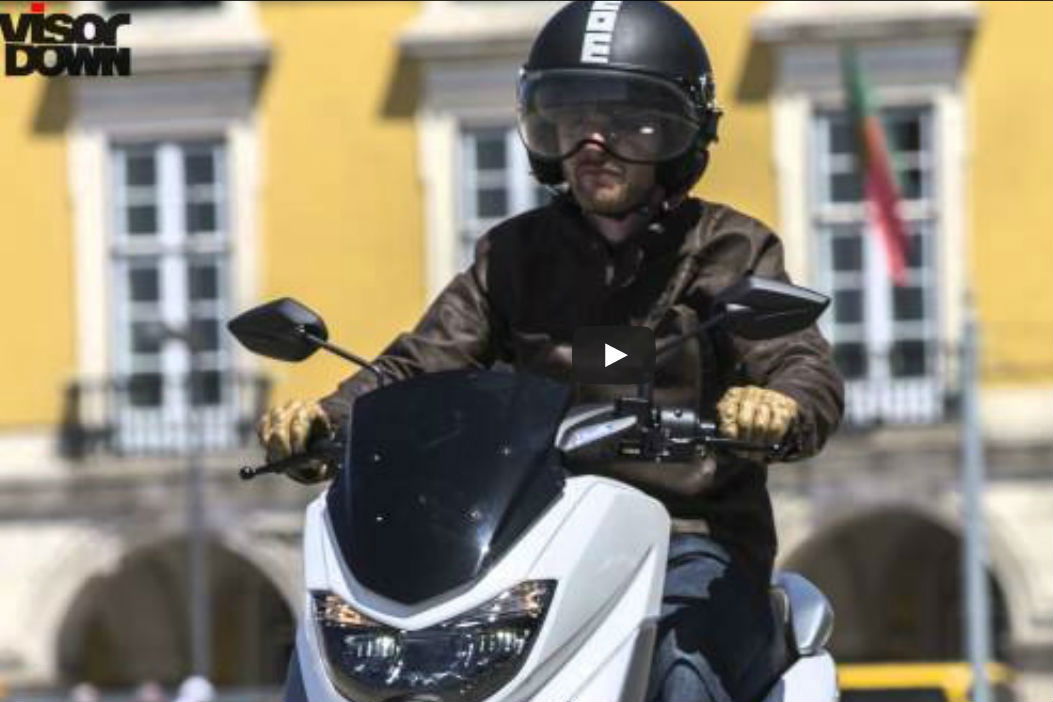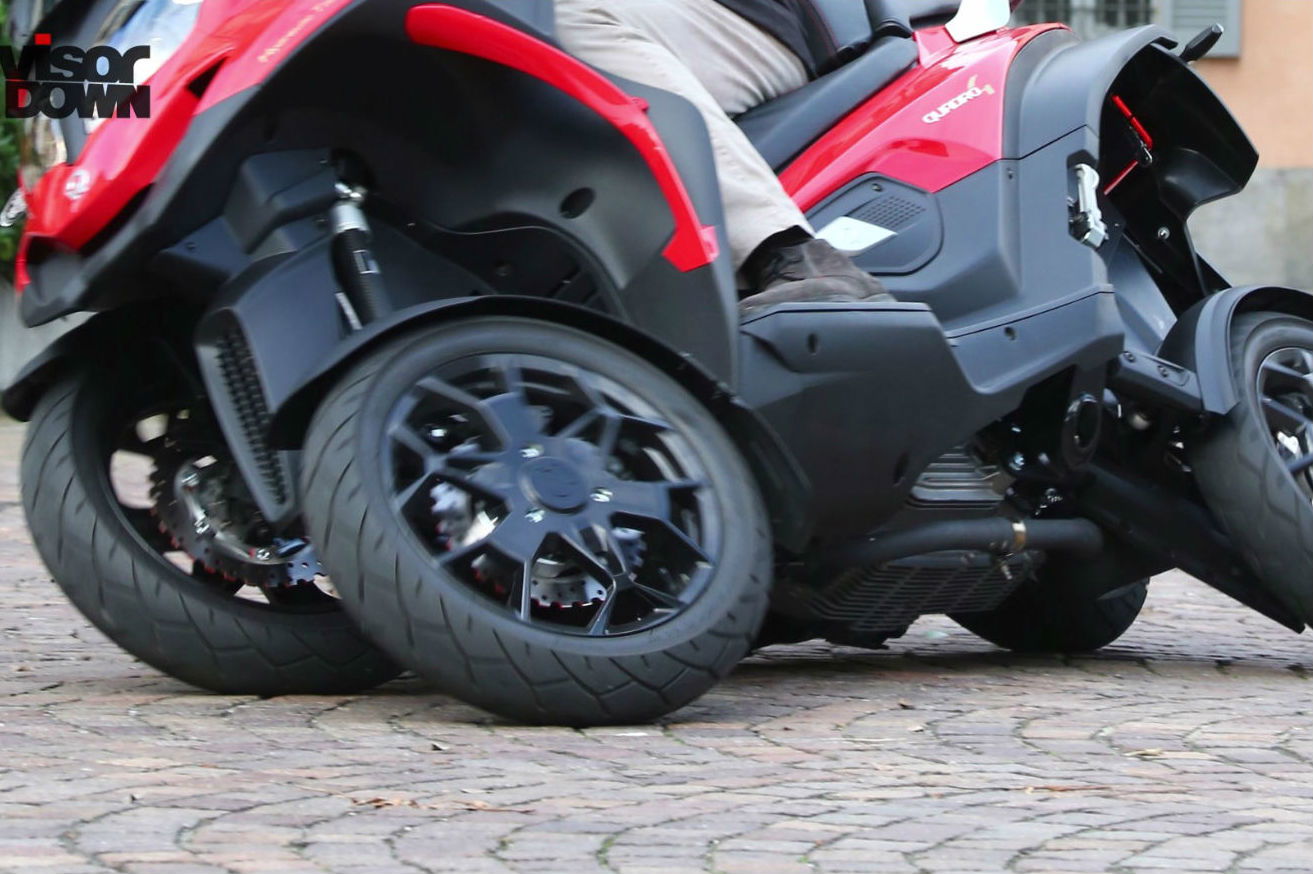First ride: Suzuki GSX-S1000F review
Don't call it a sports tourer

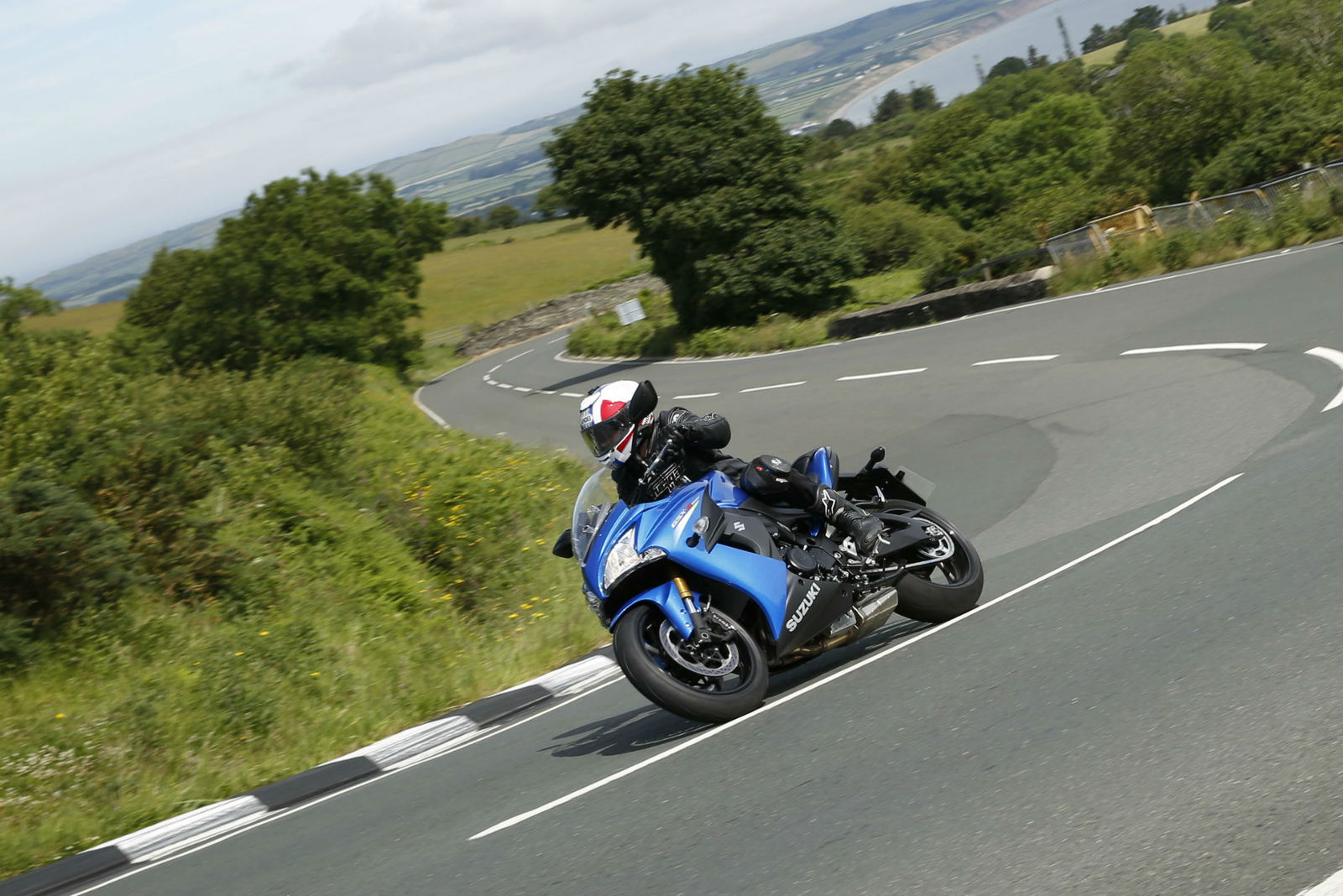
WE'LL need to redefine a few bike classes after this year, or make some new ones. For example, the sports tourer class now includes some new adventurey-looking models, like MV Agusta's Turismo Veloce and Yamaha's MT-09 Tracer.
Kawasak's Ninja H2 seems to have created its own class, one that doesn't yet have a name.
And so, possibly, has Suzuki's GSX-S1000F.
From the moment it was unveiled at the Intermot Cologne show last September, it's been assigned by consensus to the sports tourer class. Where else would you put an upright, straight-barred, tall-screened litre bike?
But it's not a sports tourer, Suzuki insists. It's a sports bike - just one that happens to be comfortable. Sitting alone in the new comfortable-sports-bike-and-nothing-else-besides category.
So there are to be no official hard luggage options for it, only a tank bag and tail pack.
Previously I might have seen that as disappointing for a machine that looks so much like it belongs in a back-to-back test with a Kawasaki Z1000SX, which does have optional panniers.
But after riding the GSX-S1000F at the press launch on the Isle of Man's Mountain Course, I think I forgive it.
It definitely has the engine of a sports bike, literally. It's an old GSX-R1000 engine, a 143.5hp, 999cc in-line-four, in a new aluminium chassis with the swing-arm from the current Gixer Thou. At the unveiling last year, Suzuki GB said it was a 2008 GSX-R1000 engine. The official line has since become that it's from a K5 (2005) GSX-R1000. The difference is marketing; the 2005 engine was retained until 2008.
Whatever year it's from was a good one. A lot of modern bikes have linear power delivery. Even where enormous power is available, the climb to it is often a constant gradient, with no unexpected steps.
The GSX-S1000F engine has tonnes of low-down and mid-range torque. It pulls sharply from 3,000rpm in fifth and gathers strength in proportion to the climbing revs – until around 9,000rpm, where there is an old-fashioned top-end surge, a rush, a step-up that makes you think: that's what I've been missing. It starts just below peak torque, which is 78.2lbft at 9,500rpm. Peak power is 143.5hp at 10,000.
Mid-range is nice, and makes the GSX-S1000F very easy to ride quite fast, knowing a high gear will give lots of drive out of a corner.
But it's an extra bit of unexpected top-end punch that gives you the incentive to ride it as fast as it will go when the road straightens, especially roads with no speed limit like the Isle of Man's Mountain Mile. It's something to go looking for, a reason not to change up yet, to wait for the hyperdrive to come on at 9,000 and take you at warp speed to the 11,500rpm red line. And it sounds good too, like a proper, howling litre sports bike.
The GSX-S1000F is the fully-faired version of the naked GSX-S1000 which was also unveiled at Intermot last year. With an identical engine, that also has that top-end surge at around 9,000. But the naked bike feels more flighty when it hits it, the front wheel more ready to leave the road.
The fairing has added 7kg to the front end of the GSX-S1000F but its stabilising effect probably goes beyond that. Suzuki says its aerodynamics produce a down-force equivalent to 20kg at 120mph. The front wheel feels more pinned to the ground. When it does begin to skip, a good sense of stability is retained.
Well into triple-figure speeds, taking a pounding from ripples and bumps, the GSX-S1000F felt completely sure-footed, the sporty, adjustable suspension keeping excellent order.
It's got a fully-adjustable upside-down fork and a shock that's adjustable for pre-load and rebound damping, both from KYB. The hardware is exactly the same as the naked version's but the settings have been adjusted to increase damping at both ends. The oil level in the fork is different. Suzuki says it's to allow for the extra weight at the front and make the bike slightly sportier, better adjusted to fast riding. The suspension's firm – my backside parted with the seat at least once – but was never flustered, always putting the rider's demands above those of the road surface.
The fairing gives the GSX-S1000F a much bulkier overall aspect than the naked version but it's still a compact machine. It feels lightweight, tipping in and out of corners like a sports bike, while the leverage of the wide, straight Renthal Fatbar lends more ease and leisure to the process than pair of clip-ons would. The Dunlop Sportmax D214 tyres give the grip and confidence to chase lean angles.
At low speeds, the lightweight feel, straight bar and a good steering angle make the GSX-S1000F easy to manoeuvre with confidence. The seat is low enough for most riders to easily get both feet flat on the ground, at 810mm.
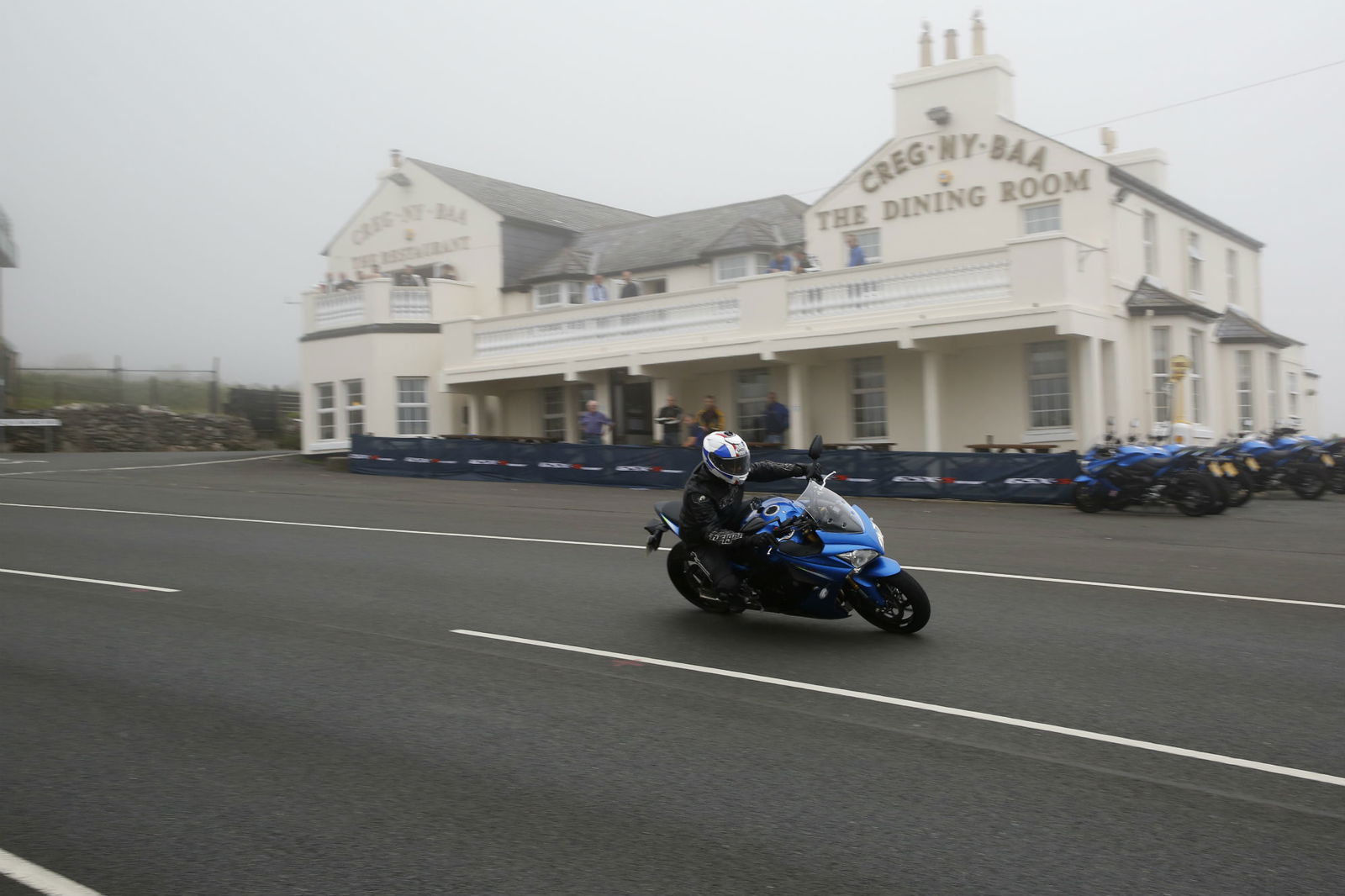
The brakes are four-piston Brembo calipers biting 310mm front discs and a single-pot Nissin caliper at the rear. The Brembos feel easily controllable and progressive but with strong bite and power when you squeeze a little harder. ABS is standard and seems good; I didn't feel it activate.
Traction control is also standard, something we can almost expect nowadays on high-spec, high-performance machines but still unusual for Suzuki. The V-Strom 1000 is the firm's only other model to have it.
Suzuki talked in their presentation about some machines having electronics packages that no one can fathom without reading a manual. It's a good point. Electronics on bikes are over-complicated. I've never read an instruction booklet for a phone and they can do anything. Why can't traction control be as intuitive?
It can. On the GSX-S1000F (and the GSX-1000) there are no menus. You press a 'Select' button on the on left bar and the traction control setting starts to flash on the dash, telling you it's ready to change. Then you press the up or down button to choose level one, two, three or off. Close the throttle and it's done. Suzuki says level one allows small slides.
It's a simple, non-colour, digital dash, but it does everything needed. Information includes your average fuel consumption and range to empty. Based on my indicated fuel consumption on the launch ride, of 35.2mpg, the range from the 17-litre tank is about 130 miles. Of course that will probably improve away from roads with no speed limit, and not on a launch ride led by former TT winner Richard ‘Milky’ Quayle, as this was.
The riding position is comfortable, with some good wind deflection from that tallish screen, even north of 100mph. It's upright but sporty, with a slight reach to the bars and the pegs directly beneath the comfortable-enough seat.
The long-legged may feel a little cramped but you can't have good peg ground clearance with a lowish seat and lots of space between the two. I'm 5'9" and there was enough leg-room for me.
I had a big complaint after spending a week living with the naked GSX-S1000: the annoying on/off throttle response. The GSX-S1000F has it too. It wants to either accelerate or shut off, and maintaining a constant speed is a delicate balancing act between the two. The tendency made itself known as soon as our ride began, leaving the Grandstand and heading through traffic in Douglas. Out of town, on a bike like this in a place this, it stops being a problem because you are either accelerating or slowing, and that's when this machine works best.
Take a corner smoothly, rolling on the power, and everything is brilliant. Ease off for any reason and again you bump into that annoying on/off tendency.
Suzuki says it's a choice the firm made, to give the machine aggressive acceleration and a quick throttle action. It's something you adapt to, and eventually forget about, and I'm sure lots of riders will live with it, or see it as the price of aggressive performance.
Personally I don't believe an aggressive or quick throttle response requires an on/off one; it's not the same thing. There are other bikes that manage to offer aggressive torque and acceleration in response to a small wrist movement and still provide smooth drive at a constant throttle.
Suzuki was also keen to highlight the 'easy-start' button. Instead of pressing and holding until the engine starts, you just dab the starter button once and release it, and the starter motor goes long enough for it to fire. It's nice but I think it solves a problem I didn't know I had.
The concern for the GSX-S1000F is whether the same could be said of the whole thing. Whether a comfortable sports bike that can't take hard luggage is a need that really exists. Or whether people will compare it to a Z1000SX and think 'But it doesn't even take luggage'.
If they do, the Suzuki is in trouble because the Z1000SX is also cheaper, at £9,699 plus on-the-road charges with ABS and £9,299 without. It makes about the same power, at 142hp, and a bit more torque, at 81.8lbft.
According to Suzuki, the differences between the GSX-S1000 and GSX-S1000F are the fairing, fairing brackets, new twin headlights (to go with the fairing), and mirrors (reshaped to go with the fairing's aerodynamics). So essentially that's four ways of saying the fairing. Plus those suspension settings of course.
Giving the GSX-S1000F the stronger sub-frame needed for hard luggage would either have meant the naked bike getting one too or it would have required more differences between the two versions, and more development costs for Suzuki.
It would also have made the GSX-S1000F heavier. As it is, its claimed kerb weight is 214kg, 17kg less than an ABS-equipped Z1000SX. That's quite a lot.
Suzuki GB's general manager, Paul de Lusignan, said it was possible a stronger sub-framed version would be offered in the future.
But that won't be purely a comfortable sports bike, which the GSX-S1000F genuinely is. Leave the luggage at home. Go for a ride on your favourite road. In comfort.
Model tested: Suzuki GSX-S1000F
Price: £9,999 plus on-the-road charges
Engine: 999cc in-line-four
Power: 143.5hp @ 10,000rpm
Torque: 78.2lbft @ 9,500rpm
Kerb weight: 214kg
Frame: aluminium
Tank capacity: 17 litres
Seat height: 810mm
Colours: blue, red, grey
- Watch our video review of the GSX-S1000F here

